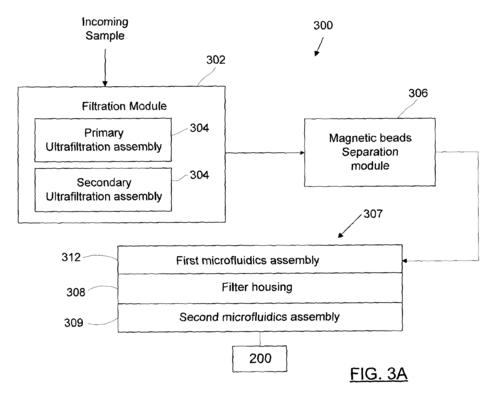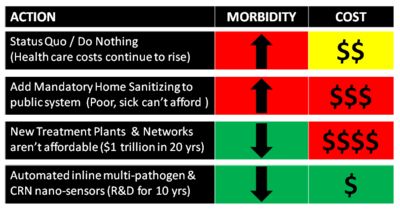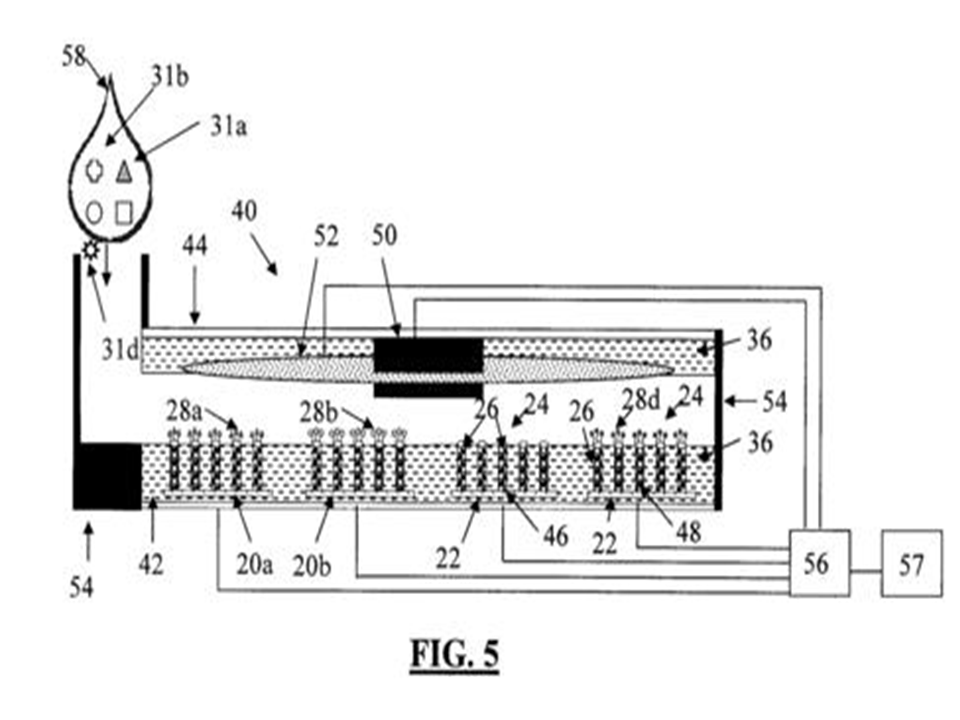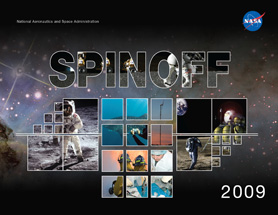 |
NEWS
March 29, 2011 - MANHATTAN, KS - A research project at K-State supported by Early Warning Inc and the U.S. Department of Homeland Security Center of Excellence for Emerging and Zoonotic Animal Diseases, or CEEZAD, can lead to advances in increased food safety and reduced health risks. Click here to see the Video.
January 11, 2011 - Making Tests Faster and More Affordable - Testing water for pathogens in laboratories is a very time-consuming process. Samples first need to be collected from the water source then transported back to a lab, where testing protocols and analysis can take up to a week. Early Warning’s solution greatly improves this model by delivering near real-time results, a wider test scope and no major infrastructure costs. Using a single instrument or a more effective network of wireless sensors that automatically sample and test water on location, Early Warning’s Biohazard Water Analyzer allows for ‘on-the-fly’ detection and reporting of potentially lethal pathogens. The entire process takes under three hours—a significant improvement over lab-based testing. Click here to see the Article.
 May 27, 2010 - Early Warning’s patent application is published as (WO/2010/057318) DEVICES AND METHODS FOR PROVIDING CONCENTRATED BIOMOLECULE CONDENSATES TO BIOSENSING DEVICES. Condensing devices and methods for providing a concentrated biomolecule condensate to one or more biosensing devices are provided. The concentrated biomolecule condensate is obtained from a fluid sample which potentially contains traces of one or more target biomolecules. The fluid sample is first separated into a filtered liquid and a retentate biomolecule condensate. A novel filtering module is provided for this purpose. The target biomolecules in the retentate biomolecule condensate are further separated from unwanted materials using magnetic beads coated with antibodies of the target biomolecules. The beaded biomolecule condensate obtained thereby is processed to extract constituents of the target biomolecules, thereby obtaining the concentrated biomolecule condensate, which is distributed to a biosensing device. Click here for patent information. May 27, 2010 - Early Warning’s patent application is published as (WO/2010/057318) DEVICES AND METHODS FOR PROVIDING CONCENTRATED BIOMOLECULE CONDENSATES TO BIOSENSING DEVICES. Condensing devices and methods for providing a concentrated biomolecule condensate to one or more biosensing devices are provided. The concentrated biomolecule condensate is obtained from a fluid sample which potentially contains traces of one or more target biomolecules. The fluid sample is first separated into a filtered liquid and a retentate biomolecule condensate. A novel filtering module is provided for this purpose. The target biomolecules in the retentate biomolecule condensate are further separated from unwanted materials using magnetic beads coated with antibodies of the target biomolecules. The beaded biomolecule condensate obtained thereby is processed to extract constituents of the target biomolecules, thereby obtaining the concentrated biomolecule condensate, which is distributed to a biosensing device. Click here for patent information.
May 6, 2010 - Early Warning’s President Neil Gordon presents his views on Early Warning and related challenges necessitating an inline pathogen detection system. Click here to see the Video.
May 2, 2010 - An estimated 19.5 million Americans, representing about 7% of the entire US population, got sick last year from drinking water containing pathogenic bacteria, viruses and parasites. Countless more consumed water with cancer-causing chemicals, radioactive substances, and nuclear materials. Pathogens and toxins are ending up in tap water from ineffective treatment of contaminated source water, infiltration of contaminants through broken water mains, an absence of government regulations that require drinking water to be adequately tested for multiple pathogens and hundreds of toxic materials, and a lax enforcement of regulations by government officials that allowed over 94% of Clean Water Act violators to avoid fines or significant punishments. Current trends suggest that the problems will intensify. An increase in America's population and related water-intensive industries such as food processing will require even more contaminant-free water, while at the same time pristine water sources are depleting.
Maintaining the status quo will likely lead to a greater number of illnesses from an aging population with an incre asing number of sick,  immuno-compromised, and malnourished who are less able to fight off pathogens and toxins. This will place a greater burden on the health care system. Rebuilding under-capacity water treatment plants and deteriorating water distribution infrastructure will take decades and approach a trillion dollars nationally in the next 20 years. A more cost-effective solution is to implement a new generation of nanotechnology-based inline sensors that rapidly detect a diverse suite of pathogens and toxins, along with updated regulations and meaningful enforcement. This will allow water operators to more quickly identify dangerous contaminants and take actions to prevent contaminated water from reaching consumers. With a network of sensors providing precise information about the sources of infiltration, water administrators would be able to prioritize major infrastructure projects by measuring the potential health benefit versus the cost of prospective investments. Click here for the article.
 January 14, 2010 - Early Warning’s patent application is published as (WO/2010/003212) BIOSENSING DEVICE AND METHOD FOR DETECTING TARGET BIOMOLECULES IN A SOLUTION. A biosensing device for detecting a presence of target biomolecules is provided, including at least one working electrode having a systematic array of nano-electrode wires projecting vertically from an electrode pad. The nano-electrode wires all have a same shape and size and are distributed non-randomly over the electrode pad. Biosensor probes are attached to the nano-electrode wire, each including a bioreceptor selected to bind with a complementary target biomolecule to create a binding event; and an electrochemical transducer transducing this binding event into an electrical signal conducted by the corresponding nano-electrode wire. A biosensing method using such a device is provided, as well as a fabrication method thereof. Click here for patent information. January 14, 2010 - Early Warning’s patent application is published as (WO/2010/003212) BIOSENSING DEVICE AND METHOD FOR DETECTING TARGET BIOMOLECULES IN A SOLUTION. A biosensing device for detecting a presence of target biomolecules is provided, including at least one working electrode having a systematic array of nano-electrode wires projecting vertically from an electrode pad. The nano-electrode wires all have a same shape and size and are distributed non-randomly over the electrode pad. Biosensor probes are attached to the nano-electrode wire, each including a bioreceptor selected to bind with a complementary target biomolecule to create a binding event; and an electrochemical transducer transducing this binding event into an electrical signal conducted by the corresponding nano-electrode wire. A biosensing method using such a device is provided, as well as a fabrication method thereof. Click here for patent information.
2009
 November 9, 2009 - In order to help detect biological traces on Mars, scientists at Ames Research Center began work on an ultrasensitive biosensor in 2002. Early Warning initially developed a working version of the NASA biosensor calibrated to detect the bacteria strain E. coli O157:H7, known to cause acute gastrointestinal illness. It also detects indicator E. coli, commonly used in water testing. The analyzer uses a biomolecule concentrator—an Early Warning invention—to reduce a 10-liter water sample to 1 milliliter in about 45 minutes. The concentrated sample is then processed and fed to the biosensor. The entire process takes about 2 hours, a drastic improvement over typical laboratory-based water sampling, which can take several days to a week. November 9, 2009 - In order to help detect biological traces on Mars, scientists at Ames Research Center began work on an ultrasensitive biosensor in 2002. Early Warning initially developed a working version of the NASA biosensor calibrated to detect the bacteria strain E. coli O157:H7, known to cause acute gastrointestinal illness. It also detects indicator E. coli, commonly used in water testing. The analyzer uses a biomolecule concentrator—an Early Warning invention—to reduce a 10-liter water sample to 1 milliliter in about 45 minutes. The concentrated sample is then processed and fed to the biosensor. The entire process takes about 2 hours, a drastic improvement over typical laboratory-based water sampling, which can take several days to a week.
 November 3, 2009 - Early Warning was selected as one of the invited firms to present at the CleanTech Investment Forum co-sponsored by the Toronto Stock Exchange (TMX) and Sustainable Development Technology Canada (SDTC). Early Warning was a recipient of a $2.3 million grant from SDTC. November 3, 2009 - Early Warning was selected as one of the invited firms to present at the CleanTech Investment Forum co-sponsored by the Toronto Stock Exchange (TMX) and Sustainable Development Technology Canada (SDTC). Early Warning was a recipient of a $2.3 million grant from SDTC.
September 30, 2009 - Early Warning's Neil Gordon and Garry Palmateer present province-wide to the Ontario Agency for Health Protection and Promotion, one of North America's largest government water testing laboratories responsible for 240,000 water samples per year at 12 locations. Click here to see the video.
 May 12, 2009 - Bacteria, viruses and parasites are responsible for the bulk of the 18.4 million deaths worldwide from communicable diseases in 2004 estimated by the World Health Organization plus additional deaths from non-communicable diseases and cancers. With advances in nanotechnology, biotechnology, information technology and wireless technology, new generations of low cost biosensors and early warning systems will provide a front line of defense against the transmission of deadly pathogens. Click here for the full article. May 12, 2009 - Bacteria, viruses and parasites are responsible for the bulk of the 18.4 million deaths worldwide from communicable diseases in 2004 estimated by the World Health Organization plus additional deaths from non-communicable diseases and cancers. With advances in nanotechnology, biotechnology, information technology and wireless technology, new generations of low cost biosensors and early warning systems will provide a front line of defense against the transmission of deadly pathogens. Click here for the full article.
April 8, 2009 - Early Warning displayed its Biohazard Water Analyzer which offers the next generation in microbial testing. Using a unique combination of advanced technologies, the Analyzer goes beyond lab culturing of indicator coliforms and directly measures individual species of pathogenic bacteria, protozoa and viruses in the same test.
2008
 December 19, 2008 - Early Warning's President Neil Gordon will be speaking at the American Water Works Association - Water Security Congress at the Omni Shoreham Hotel, Washington, D.C. on April 9, 2009. His presentation title is "Direct measure of total and viable cell concentrations of specific pathogens in water networks using NASA’s nanotech biosensor". Early Warning will also exhibit its Biohazard Water Analyzer at the Congress. December 19, 2008 - Early Warning's President Neil Gordon will be speaking at the American Water Works Association - Water Security Congress at the Omni Shoreham Hotel, Washington, D.C. on April 9, 2009. His presentation title is "Direct measure of total and viable cell concentrations of specific pathogens in water networks using NASA’s nanotech biosensor". Early Warning will also exhibit its Biohazard Water Analyzer at the Congress.
 November 17, 2008 - Early Warning's President Neil Gordon will be speaking at Sensors Expo & Conference 2009 on June 10, 2009 at the Donald E. Stephens Convention Center in Rosemont, Illinois. His presentation title is "Next Generation Biosensors Made Possible with Digital Multiplexing Potentiostat". Early Warning will also exhibit its Biohazard Water Analyzer at the Expo. November 17, 2008 - Early Warning's President Neil Gordon will be speaking at Sensors Expo & Conference 2009 on June 10, 2009 at the Donald E. Stephens Convention Center in Rosemont, Illinois. His presentation title is "Next Generation Biosensors Made Possible with Digital Multiplexing Potentiostat". Early Warning will also exhibit its Biohazard Water Analyzer at the Expo.
October 21, 2008 - Early Warning's President Neil Gordon is featured in audio visual presentation of the company's upcoming Biohazard Water Analyzer as presented at Rensselaer Polytechnic Institute. Click here to see the presentation and PowerPoint slides.
August 5, 2008 - Department of Homeland Security Secretary Michael Chertoff visited NASA’s Ames Research Center to see first-hand how NASA technology helps the nation deal with disasters. Chertoff learned how nanotechnology is being used in a variety of new technologies, such as a revolutionary biosensor licensed to Early Warning, Inc that can detect trace amounts of specific bacteria, viruses and parasites and help prevent the spread of potentially deadly biohazards in water, food and other contaminated sources.
 July 29, 2008 - Most biotesting is done in a lab, and it can take up to 72 hours to determine if a sample - water, for instance - has pathogens in it. "A lot of chemistry has to take place, and you need to have many copies of the target microorganism," Gordon said. "To do that, you have to incubate them in an oven or use other techniques, and then make copies. So this is a very laboratory-intensive and time-intensive process." Instead, Gordon wanted a biosensor that could work quickly under harsh conditions and be able to detect small amounts of multiple pathogens. NASA's biosensor, which can deliver results in as little as a half hour, met all those needs. July 29, 2008 - Most biotesting is done in a lab, and it can take up to 72 hours to determine if a sample - water, for instance - has pathogens in it. "A lot of chemistry has to take place, and you need to have many copies of the target microorganism," Gordon said. "To do that, you have to incubate them in an oven or use other techniques, and then make copies. So this is a very laboratory-intensive and time-intensive process." Instead, Gordon wanted a biosensor that could work quickly under harsh conditions and be able to detect small amounts of multiple pathogens. NASA's biosensor, which can deliver results in as little as a half hour, met all those needs.
 July 7, 2008 - Neil Gordon, President and CEO of Early Warning will discuss Early Warning's biodetection system at NanoBiotech 2008 taking place at Rensselaer Polytechnic Institute in Troy, NY on September 15, 2008. For further information see the conference website at http://www.alumni.rpi.edu/nanobio2008.html. July 7, 2008 - Neil Gordon, President and CEO of Early Warning will discuss Early Warning's biodetection system at NanoBiotech 2008 taking place at Rensselaer Polytechnic Institute in Troy, NY on September 15, 2008. For further information see the conference website at http://www.alumni.rpi.edu/nanobio2008.html.
 June 5, 2008 - Indeed, the real challenge to making electronic-based biosensors into products is not which material performs the best, but how they will be mass-produced, says Mark Reed, a professor of electrical engineering and applied physics at Yale University. "I am impressed by NASA's work, and they have very nice results," he says. While NASA plans to eventually use the sensor to detect the presence of life on other planets, it has licensed the technology to Early Warning, a company that develops systems to monitor biohazards. June 5, 2008 - Indeed, the real challenge to making electronic-based biosensors into products is not which material performs the best, but how they will be mass-produced, says Mark Reed, a professor of electrical engineering and applied physics at Yale University. "I am impressed by NASA's work, and they have very nice results," he says. While NASA plans to eventually use the sensor to detect the presence of life on other planets, it has licensed the technology to Early Warning, a company that develops systems to monitor biohazards.
May 28, 2008 - Waterloo offers a vast talent pool in water technologies, diverse engineering and communications disciplines, and nanotechnology know-how, along with a close proximity to the University of Waterloo where Early Warning is collaborating with four Waterloo professors and various students.
May 20, 2008 - NASA's Ames Research Center at Mo
|
|